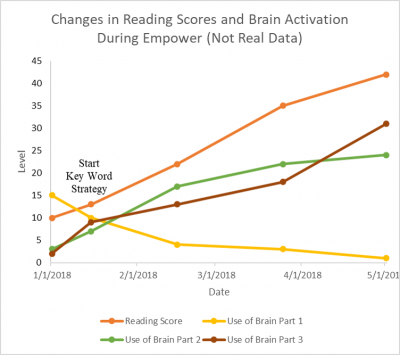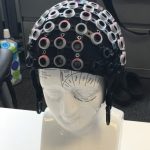fNIRS: Functional Near-Infrared Spectroscopy
fNIRS can detect what parts of the brain is used during an activity. When people use a part of the brain, the brain increases the blood flow to that area. The fNIRS technology can "see" the color of the blood: If it is more red, we know that part of the brain is being used most.
To the right, you see some imaginary data that show how fNIRS connects with Empower. During instruction, we will see how much readers use different parts of the brain. They will use some parts of the brain more as they learn to read better. They will use other parts less because they are learning to use the parts that make them read best.
fNIRS Safety
fNIRS is perfectly safe, even for doing lots of sessions like we do here. It has been used with children less than a year old. The amount of light that goes into the brain is about the same amount of light that goes into the brain when you walk outside on a sunny day. To the left, you see the fNIRS cap that a student wears when they do fNIRS. We connect cords into the cap that allow a computer to detect the color of the blood in the brain.


fNIRS at Haskins Laboratory
Haskins Laboratory manages the neuroimaging components of the study. Haskins is an affiliate of Yale University and University of Connecticut. This video shows some of the fNIRS technology. You can watch a video that shows you the equipment we use at Haskins when children come for visits.